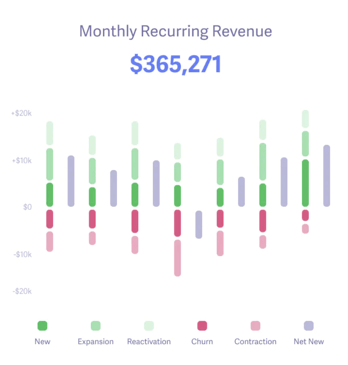Table of Contents

Merchants looking to set up shop online are faced with an important choice: which ecommerce platform will best serve their business?
For those looking to use their own website, that choice generally comes down to two competing services: Shopify vs. WooCommerce.
It’s important to make the right choice of platform early on, because numerous key strategies for development and marketing flow from that decision.
Why are Shopify and WooCommerce the two most popular ecommerce platforms?
Both Shopify and WooCommerce share certain features that make them invaluable to online sellers. These include an array of third-party apps, plugins, customizable themes, etc.
There are some key differences between the two platforms, however.
This article will compare Shopify and WooCommerce from the perspective of merchants, including the benefits, common pain points, and compatible third-party offerings of each platform. By the end, you will be able to identify which platform is right for you.

All the data your Shopify Partners app needs
Know instantly how your Shopify app is performing, what’s working, what needs improving, and where to focus next.
Shopify vs.WooCommerce – a detailed comparison
Let’s take a look at the key differences between Shopify vs. WooCommerce across the following topics: pricing, hosting, development, and scalability. *
1. Pricing
Overall, Shopify comes with a bigger price tag. There is a ‘lite’ plan available at $9/month, however, this tier doesn’t include a shop. Merchant plans that do include one are priced at $29, $79, and $299 per month. Shopify’s pricing tiers are determined by which tools are included, and the user’s volume of sales.
WooCommerce (powered by Bluehost), on the other hand, offers plans at $13.99, $17.99, and $31.99 per month.
Both platforms include tailored enterprise-level plans available upon request.
While Shopify offers a free, 14-day trial that gives prospective shopkeepers enough time to build a store, WooCommerce offers a 30-day money-back guarantee.
2. Hosting
Shopify is a hosted service. Merchants create their shops directly on Shopify’s domain, which means that all hosting fees are included in the pricing. The added benefit of this is speed: thanks to Shopify Oxygen*, this hosting service is also very fast.
WooCommerce is not a hosted service; it is built on top of WordPress. This means that merchants must find and pay for a separate hosting service.
3. Usability
It’s very easy to open a store on Shopify that looks good and is simple to use, even without a background in engineering or design.
Creating an operational shop on WooCommerce, on the other hand, generally requires the expertise of a developer
The two platforms also use different languages. It’s important to factor this into your decision; if your team is proficient in JavaScript and PHP, the common languages of WooCommerce and WordPress, the cost-efficiency and adaptability of this platform might make it the right choice for you.
Shopify, however, uses its own native language called Liquid. Its programming is language-agnostic; the main advantage of this is that Shopify Partners can develop apps for Shopify in any language.
4. Scalability
Shopify and WooCommerce can both scale to any size. Last August for instance, Shopify announced upgrades to the Shopify Checkout that make it possible for a single shop to process nearly 40,000 items in sales per minute.
That means that no matter how much your business grows, your ecommerce location can grow with you.
App Development
All apps developed for Shopify must be accessed through the Shopify App Store, which performs a rigorous vetting process before release.
WooCommerce has a non-exclusive plugin shop; these can also be accessed through the WordPress shop, as well as other online locations.
How does this affect merchants?
Shopify’s vetting process ensures that every app in the Shopify App Store is safe to use.
Listing compatible apps all in the one place also means that they are easy to find – with over 6000 publicly available apps, this accessibility is a really important advantage.
WooCommerce and WordPress, on the other hand, are open ecosystems, which means users need to search across multiple shops to find all available plugins and filter out the incompatible ones themselves (and there’s a lot to sift through: the WordPress shop offers approximately 1,000 plugins with the keyword “WooCommerce” in the title, the WooCommerce homepage lists around 500 more, and the top external marketplace for WooCommerce plugins touts another 2000).
Overall, the two markets are comparable in size and variety. In terms of simplicity of access and safety, however, Shopify easily wins out.
Revenue Share
Revenue share refers to the % cut paid to the ecommerce platform for hosting your shop. Aside from their overheads and development costs, this % also goes to advertising the platform and your store with it – while this cut might seem like a sunk cost, it actually goes a long way towards boosting your sales.
WooCommerce uses the term “product net revenue”, which equates to revenue less discounts, returns, affiliate costs, processing fees, and taxes. WooCommerce charges a 30% revenue share on said product net revenue.
Until this year, Shopify charged a 20% off revenue. At their 2021 Unite conference, Shopify announced a drastic reduction of their revenue share. Presently, Shopify charges 0% revenue share on the first $1,000,000 sold per year, and 20% thereafter. This excludes their processing fee.
Here’s a quick chart illustrating what that means for your business across different bands of revenue:
|
Revenue in $ |
WooCommerce |
Shopify |
Difference |
|
500,000 |
150,000 |
0 |
150,000 |
|
1,000,000 |
300,000 |
0 |
300,000 |
|
1,500,000 |
450,000 |
75,000 |
375,000 |
|
2,000,000 |
600,000 |
150,000 |
450,000 |
While revenue share alone doesn’t determine which option is cheaper (remember to factor in the monthly subscription and processing fees), Shopify’s lower % cut could save your business a small fortune. To earn an equivalent amount on WooCommerce, you’d have to rake in an extra 30% in sales.*
Resources for learning how to best use Shopify vs. WooCommerce?
The WooCommerce guidebook for developers is very comprehensive. It provides extensive information about how to develop apps, troubleshoot errors, etc.
Their guide, however, doesn’t provide any guidance on how to market your app, track its growth, etc. The material is also fairly dry and dense, without real illustrations of how the process works. If your dev team is new to building plugins, this guidebook might be difficult to follow
How to Build a Shopify App: The Complete Guide, on the other hand, delivers on its promise to provide an entry-level tutorial into online store-building. It is a beautiful, interactive compendium of everything you will need to develop an app for Shopify. Actually, it provides everything you need to become a full-fledged app developer for Shopify.
The guidebook doesn’t end at the release of your app, either. The tutorial goes on to explain app vetting, entering plugins into the Shopify App Store, marketing, and how to use the AARRR pirate metrics system with Baremetrics to track growth.
The Complete Guide also provides beautiful graphics throughout, demonstrating each step visually. It’s a much simpler guidebook targeting more entry-level dev teams. For an overview of this guide, check out our recent summary of the key points here.
What tools are available for developing apps for Shopify vs. WooCommerce?
We’ve recently written about some of the tools available for building Shopify apps. Many of these are generic tools that can be used to develop any software, while others are specifically released by Shopify for internal use.
Along with the aforementioned Hydrogen and Oxygen tools,Shopify CLI is another tool develope by Shopify. It helps you build apps by quickly generating Node.js, Ruby on Rails, PHP apps, app extensions, and so on.
So, which platform is better for your business?
Shopify is generally regarded as the more user-friendly option, but this ease of use comes at the cost of customizability (Shopify Hydrogen* may soon change that, however). Conversely, WooCommerce is usually seen as the better option for merchants who are more experienced with WordPress and app development.
Ultimately, the better choice for you will be determined by what type of merchant you are, and the kind of users you’re hoping to attract.
Overall, Shopify provides the better ecommerce ecosystem, which means that it has the better prospective client base. That means more revenue for you, and the zero percent revenue share means you get to keep more of your earnings.



